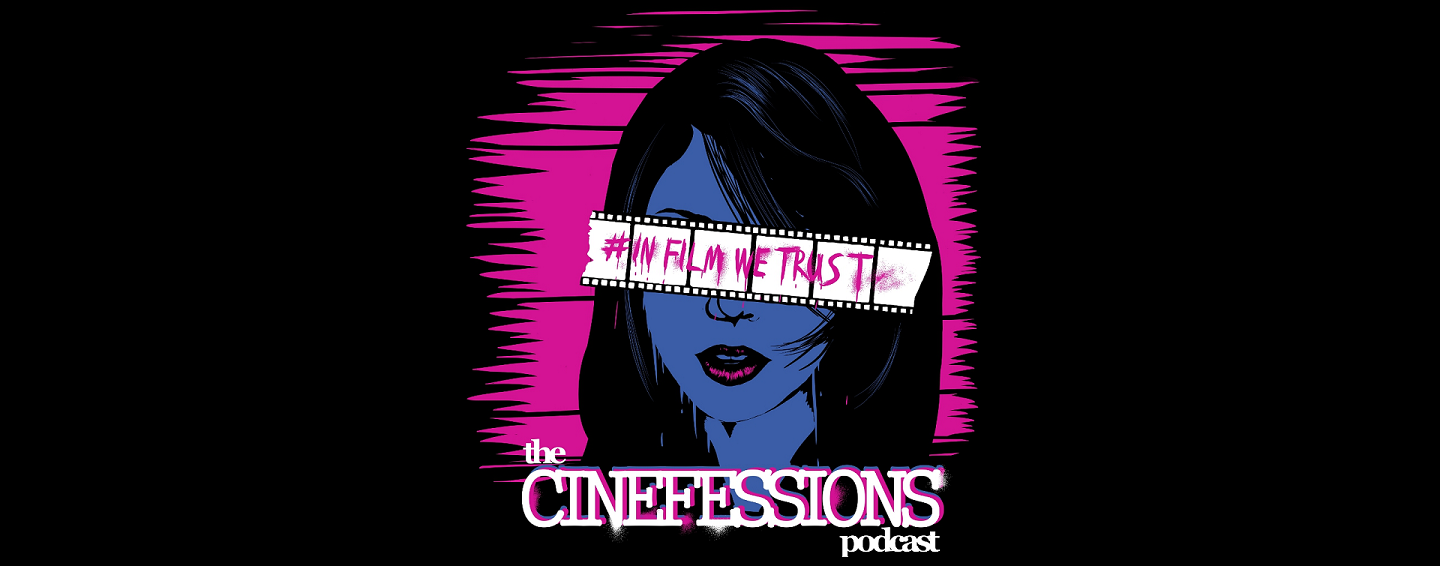 Movie Number– 112
Movie Number– 112
Title– Nightmares in Red, White, and Blue: The Evolution of the American Horror Film (2009)
Running Time– 96 minutes
Director– Andrew Monument
Writer– Joseph Maddrey
Starring– Lance Henriksen, John Carpenter, Joe Dante, Roger Corman, George A. Romero, Darren Lynn Bousman, Larry Cohen (all as themselves)
—
Anyone who follows this site knows that I am planning on attempting to watch 31 horror movies in the month of October. With this movie – Nightmares in Red, White, and Blue: The Evolution of the American Horror Film – coming out Tuesday, I decided it would be a great way to jump-start the wonderful month that is to come. I placed this atop my Netflix queue in hopes that I would get it on the day it released, and Netflix didn’t let me down (now, trying to get Dark Night of the Scarecrow is a different story). I was able to watch it Wednesday, in two sittings between classes.
Nightmares in Red, White, and Blue: The Evolution of the American Horror Film is, obviously, a documentary covering the horror film in America from its start in popularity with the 1920’s, through post-9/11 America today. Doing some research on the film, it appears to be based off a book of the same title, written in 2004 by Joseph Maddrey, the screenwriter for the film (the book is extremely overpriced, though, at $35, so I will not be buying that one). Nightmares includes some of the industries biggest names, including George A. Romero (Night/Dawn/Day of the Living Dead), John Carpenter (The Thing), Darren Lynn Bousman(Saw II, III, IV), Lance Henriksen (Pumpkinhead), and Roger Corman (Day the World Ended). The film was able to break down the history of horror into roughly nine different eras, which I will do my best to explain.
 First, though, I want to touch on some problems I had with the documentary. Right of the bat, it’s important to note that the documentary does contain some spoilers. Some people might classify these as minor spoilers, and others will think their movie ruined because of it. For example, if you haven’t seen The Thing from Another Planet (the precursor to the John Carpenter remake The Thing), you might find a clip in the documentary spoils a bit of the excitement for you because it gives away a scare. I’m one of the weird ones who hates seeing anything but the trailer for a movie before I watch it in its entirety, so I found this to be quite annoying throughout the film, but by no means a deal breaker. Secondly, there is no denying the filmmaker, and the people being interviewed, are mainly left-wing liberals because they will voice their opinions on politics as freely as their opinions on the horror genre. This didn’t bother me much, but it was obvious enough that even I, a political moron, noticed it. Looking at reviews of the Nightmares book show that the same can be said for the novelization of this documentary. Don’t get me wrong: it is very important to point out the political and social problems of the time, because as this movie showed me, these problems are directly related to the horror movies of the time. Where Nightmares goes awry on this subject, for example, was when (most notably) John Carpenter continues on about his ideals longer than was necessary to explain the politics of the time.
First, though, I want to touch on some problems I had with the documentary. Right of the bat, it’s important to note that the documentary does contain some spoilers. Some people might classify these as minor spoilers, and others will think their movie ruined because of it. For example, if you haven’t seen The Thing from Another Planet (the precursor to the John Carpenter remake The Thing), you might find a clip in the documentary spoils a bit of the excitement for you because it gives away a scare. I’m one of the weird ones who hates seeing anything but the trailer for a movie before I watch it in its entirety, so I found this to be quite annoying throughout the film, but by no means a deal breaker. Secondly, there is no denying the filmmaker, and the people being interviewed, are mainly left-wing liberals because they will voice their opinions on politics as freely as their opinions on the horror genre. This didn’t bother me much, but it was obvious enough that even I, a political moron, noticed it. Looking at reviews of the Nightmares book show that the same can be said for the novelization of this documentary. Don’t get me wrong: it is very important to point out the political and social problems of the time, because as this movie showed me, these problems are directly related to the horror movies of the time. Where Nightmares goes awry on this subject, for example, was when (most notably) John Carpenter continues on about his ideals longer than was necessary to explain the politics of the time.
 As I mentioned, the film broke down the horror movie genre into about nine major categories. The documentary started off with the “New Age of Monsters”, which covered the 1920’s – 1930’s horror boom in America, when the genre kicked off and gained commercial success with movies like Dracula, Frankenstein, Freaks, and King Kong. Then, the War to End All Wars started up, and the horror genre moved to a time Nightmares entitled “Shadowland”. This includes movies like The Wolf Man, The Leopard Man, Cat People, and Shadow of Doubt. Because World War I was mislabeled, the horror genre floated toward the fear of the day: nuclear fallout. That is when we get to “Big Bugs, Body Snatchers, and The Bombs”, which coincides with World War II. This era of horror movies brought us The Day The World Ended (Roger Corman’s first film), Them!, The Thing From Another World, and Invasion of the Body Snatchers. Most of these movies in this time dealt with problems that the world would face after the nuclear bomb went off. Fortunately, that never happened, and we moved to “Apocalypse America”, which covers the start of the Vietnam War, and the huge anti-political movements of the 1960’s. Here we get movies like Psycho, The Birds, The Trip, and Whatever Happened to Baby Jane?.
As I mentioned, the film broke down the horror movie genre into about nine major categories. The documentary started off with the “New Age of Monsters”, which covered the 1920’s – 1930’s horror boom in America, when the genre kicked off and gained commercial success with movies like Dracula, Frankenstein, Freaks, and King Kong. Then, the War to End All Wars started up, and the horror genre moved to a time Nightmares entitled “Shadowland”. This includes movies like The Wolf Man, The Leopard Man, Cat People, and Shadow of Doubt. Because World War I was mislabeled, the horror genre floated toward the fear of the day: nuclear fallout. That is when we get to “Big Bugs, Body Snatchers, and The Bombs”, which coincides with World War II. This era of horror movies brought us The Day The World Ended (Roger Corman’s first film), Them!, The Thing From Another World, and Invasion of the Body Snatchers. Most of these movies in this time dealt with problems that the world would face after the nuclear bomb went off. Fortunately, that never happened, and we moved to “Apocalypse America”, which covers the start of the Vietnam War, and the huge anti-political movements of the 1960’s. Here we get movies like Psycho, The Birds, The Trip, and Whatever Happened to Baby Jane?.
Once Vietnam was underway, horror fans were treated to what Nightmares dubbed “savage cinema” (in the category “Land of the Free”), where brutal, bloody violence became the norm. I Drink Your Blood, Death Wish, The Texas Chainsaw Massacre, and The Hills Have Eyes are perfect examples of this bloody time. It wasn’t until post-Vietnam when some of the 70’s classics started coming to light: The Exorcist, Halloween, The Omen, Phantasm, Dawn of the Dead, Creepshow, The Amityville Horror, and so on. “Old Monsters’ New Flesh” brings us to the mid-80’s, where the horror genre returned to its American roots, and slasher films started owning the box office. Friday the 13th, Scanners, My Bloody Valentine, The Howling, and The Fog were some examples of this category in Nightmares.
 “The Nightmare American” was the time when serial killers became real people, and reality started being questioned in horror cinema, giving us movies like Henry: Portrait of a Serial Killer, The Silence of the Lambs, American Psycho, The Sixth Sense, and The Blair Witch Project. This category lead all the way up until 9/11, which Nightmares titles “Ground Zero”. Post 9/11 horror producers started focusing in on ways to market horror to newer audiences, which is why we saw a focus on big budget remakes like Texas Chainsaw Massacre, and The Hills Have Eyes. Aside from remakes, the horror genre is introduced to Jigsaw, the serial killer of this decade’s most successful horror franchise, Saw. Showing where the horror movie might go next, Nightmares references Pan’s Labyrinth as an example of an untapped creative source that can work for the future of the genre.
“The Nightmare American” was the time when serial killers became real people, and reality started being questioned in horror cinema, giving us movies like Henry: Portrait of a Serial Killer, The Silence of the Lambs, American Psycho, The Sixth Sense, and The Blair Witch Project. This category lead all the way up until 9/11, which Nightmares titles “Ground Zero”. Post 9/11 horror producers started focusing in on ways to market horror to newer audiences, which is why we saw a focus on big budget remakes like Texas Chainsaw Massacre, and The Hills Have Eyes. Aside from remakes, the horror genre is introduced to Jigsaw, the serial killer of this decade’s most successful horror franchise, Saw. Showing where the horror movie might go next, Nightmares references Pan’s Labyrinth as an example of an untapped creative source that can work for the future of the genre.
Nightmares in Red, White, and Blue does an excellent job of breaking down the horror genre into different categories throughout the ages, and gives good detail on how and why horror movies reflect the social climate of the times. I would recommend horror movie novices stay away for fear of spoilers, but veterans to the genre who are looking for something informational on the subject have a great option with Nightmares. The interviews with the directors, producers, and actors are in-depth, and they don’t seem to hold anything back (which some may find politically annoying). It is one of the first documentaries I have watched on the genre, but I imagine it will remain near the top of my list for years to come.
Check Out on IMDB
Rent on Netflix

Branden has been a film fan since he was young, roaming the halls of Blockbuster Video, trying to find the grossest, scariest looking VHS covers to rent and watch alone in the basement. It wasn’t until recently, though, that Branden started seeking out the classics of cinema, and began to develop his true passion for the art form. Branden approaches each film with the unique perspective of having studied the art from the inside, having both a bachelor’s and master’s degree in acting. He has been a film critic since 2010, and has previously written for Inside Pulse Movies, We Love Cult, and Diehard Gamefan. His biggest achievement as a film critic, to date, has been founding Cinefessions and turning it from a personal blog to a true film website, housing hundreds of film and television reviews, and dozens of podcasts.

